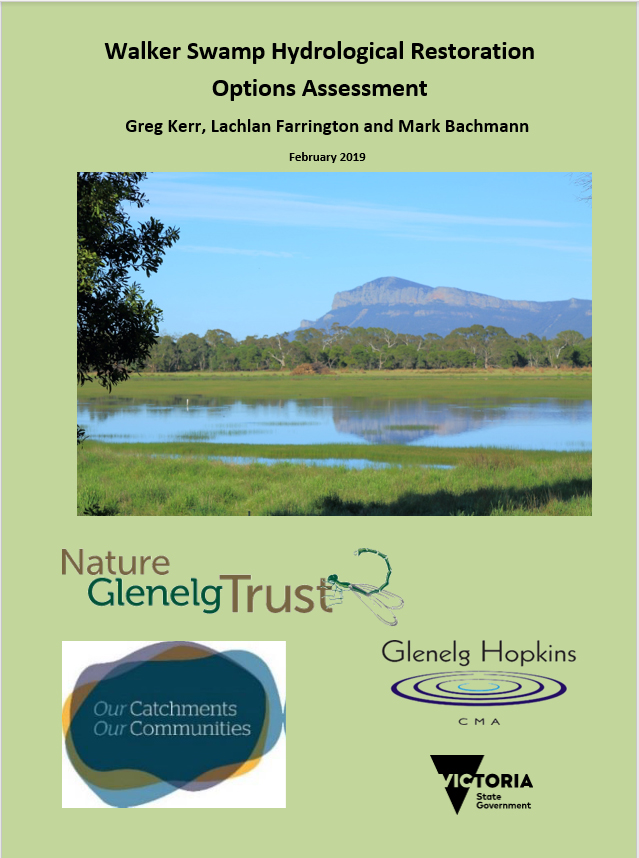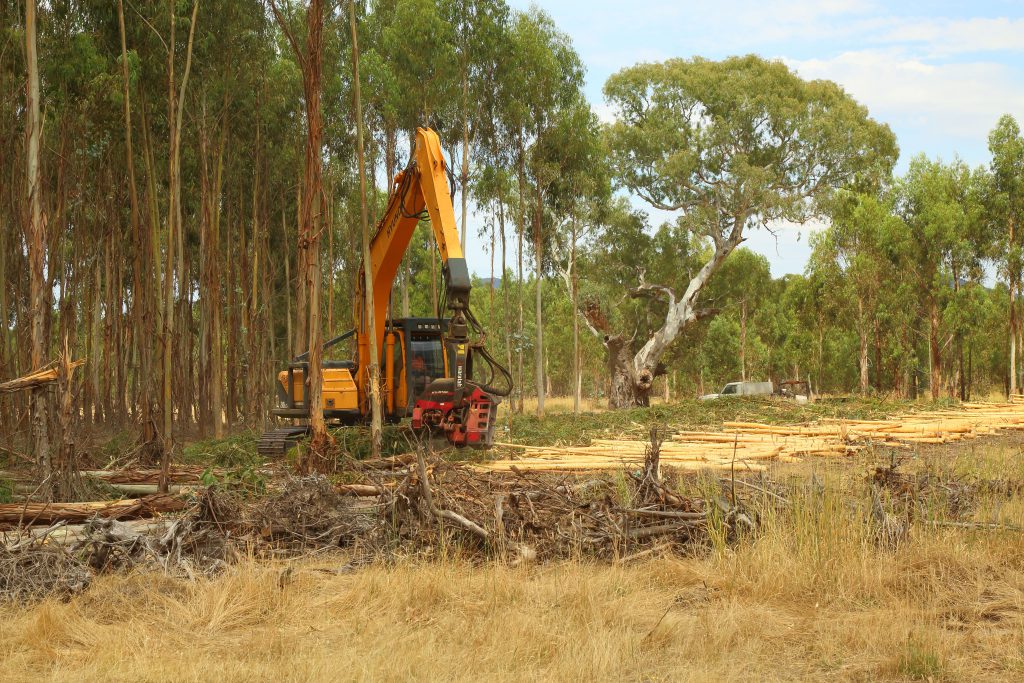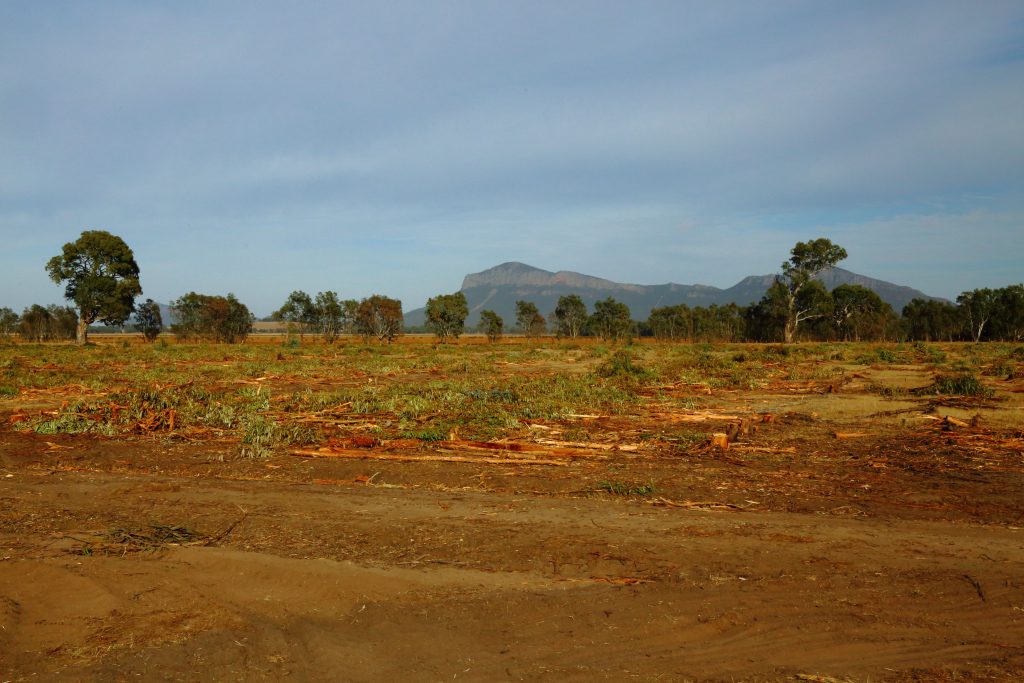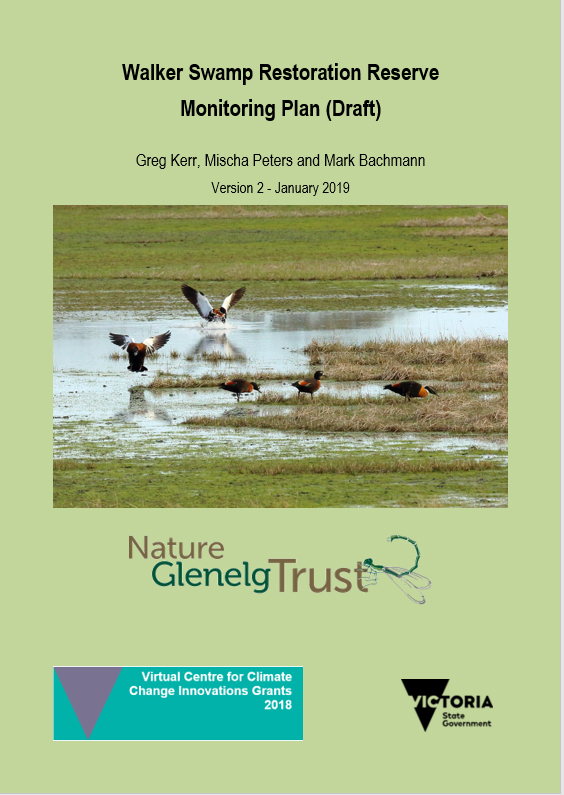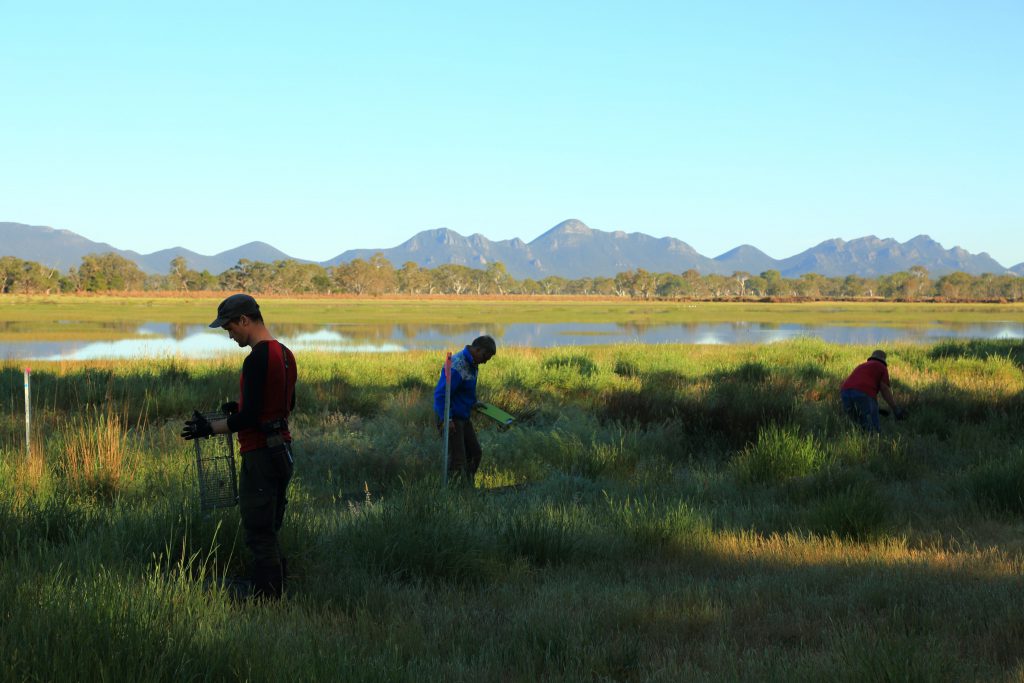Preparing the ground at Walker Swamp – the end of the beginning
Twelve months into the Walker Swamp project and we are nearly ready to install the regulator on the outlet of the northern Bunnugal Drain and restore the wetland permanently.
Works to prepare the ground at Walker Swamp have been gathering pace and a suite of projects are all now underway or about to start prior to the construction of the new regulator by the end of March.
Hydrological study
Following many months of intensive work NGT has completed the hydrological study for the Walker Swamp project area.
Funded by the Victorian Government Our Catchment our Community Grants, this study reviewed the hydrology and ecology of Walker Swamp Restoration Reserve (WSRR). The review assessed the predicted ecological outcomes and effects on adjacent private properties, and underpinned the final regulator design and our understanding of the final wetland footprint. A restored sill level of 243.5 m (AHD) can be achieved by an earthen blockage in the main outflow drain, towards the western edge of the reserve. Combined with a building up of existing levees to the west and north west of the reserve, the full supply level of Walker Swamp can be raised by 0.5 m above that maintained by the existing temporary structure.
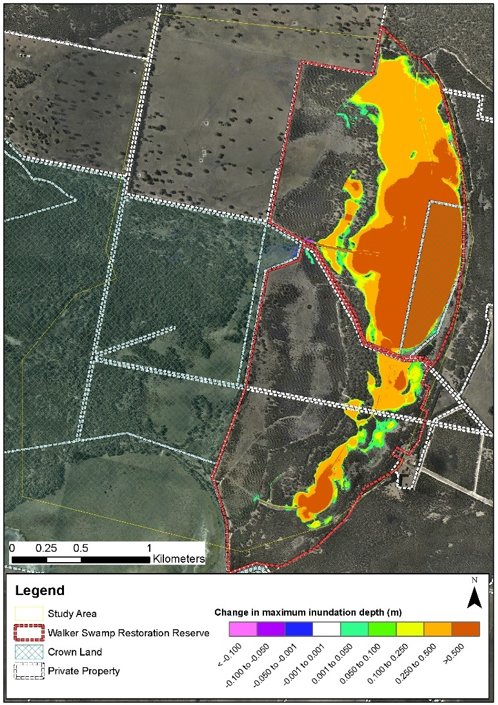
The raised water level will provide benefit to wetland dependent flora and fauna recorded across the reserve, without affecting private property to the west.
Two-dimensional flow modelling undertaken by Lachlan Farrington developed an understanding of inflows and outflows under normal and 1-in-100 year flows. Modifications to infrastructure are also needed to accommodate the new full supply water levels. NGT has completed Works on Waterways permits through the Glenelg Hopkins CMA, and an Application for Planning Permit through the Ararat Rural City Council.
These involve:
1. Removing all 26 km of drains across the WSRR
2. Inserting culverts in existing levees to reconnect wetlands
3. Upgrading Lynchs Crossing road by installing culverts and raising it by 50 cm
4. Raising levees in the northern sector
5. Building the new regulator, and
6. Restoring the natural sill at the southern end of Walker Swamp by removing a levee.

We have been working with two highly skilled volunteers (Michael Talanskas and Brenton Puddy) to survey and design the new regulator. There are some big undertakings ahead – please read on to see what will be keeping us busy at Walker Swamp!


Blue gum removal
The start of the transformation from blue gum plantation to open red gum woodland has continued with the recent removal of blue gum for woodchip. Over the last six weeks nearly 45 ha of blue gum have been felled in the south-west corner of the Reserve, opening a spectacular vista through red gums and across to the Serra Range in the Grampians Gariwerd National Park.
More fencing
Following the construction of 8 km of new fencing in June of last year, we received additional funding to upgrade 5 km of existing fencing in poor condition. Funded by a second Victorian Government Our Catchment our Community Grant, this project has been assisted by the Landmate Prison Environment Program. The team of up to twelve people has worked effectively and rapidly to replace and upgrade over 3 km of fence to date.
More blue gum furrow and mound removal
Last year over 50 ha of furrows and mounds from failed blue gum plantings were removed using a laser bucket and tractor. This has proved remarkably effective, and the subsequent restoration of wetland vegetation in these areas is quite spectacular.

Again using funding from an Our Catchments, Our Communities grant a further 40 ha of blue gum furrows and mounds is presently being removed.
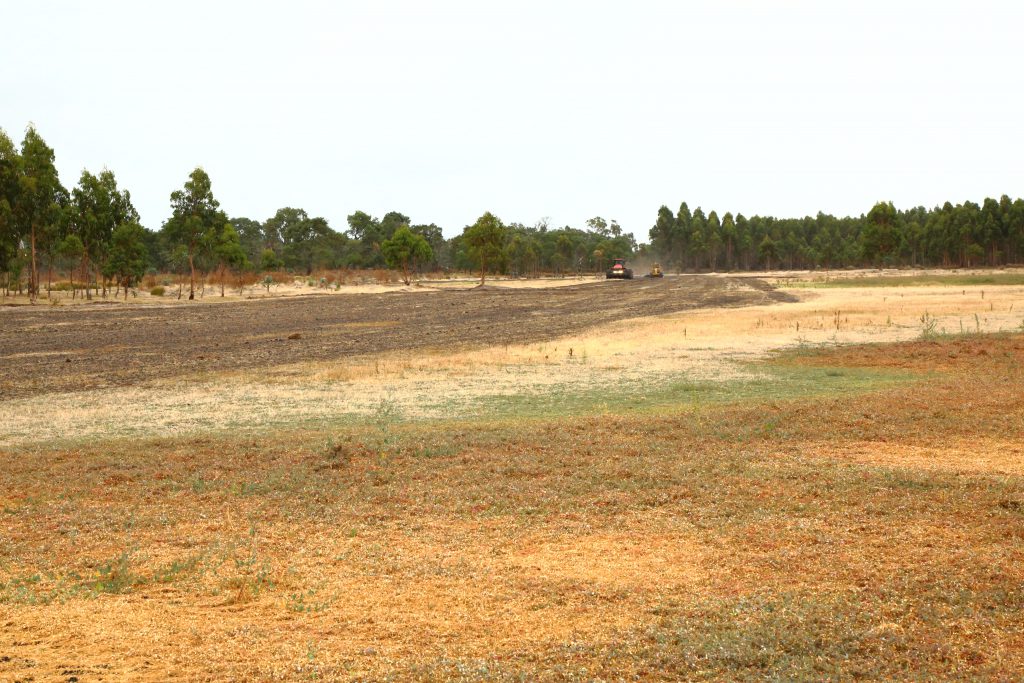
Baseline surveys and development of a long-term Monitoring Plan
Over the past six months funding from the Victorian Government Virtual Centre for Climate Change Innovation Grants Program, has been used to design and implement a long-term Monitoring Plan for the WSRR. This document outlines the background and rationale underpinping the design of the monitoring program, survey methods and surveillance, and details the standard operating procedures (SOP) to implement the program.
NGT staff have spent the past six months collecting baseline data to allow:
• monitoring of changes in extent and composition of Ecological Vegetation Classes
• assessment of vegetation condition and composition (e.g. EVCs)
• associated diversity and abundance of bird species in both aquatic and terrestrial habitats at the site
• associated fish, crustacean and frog diversity and abundance
• aquatic macroinvertebrate diversity
• terrestrial vertebrate and selected invertebrate diversity and abundance
• annual assessment of river red gum condition, and
• annual assessment of aquatic physical and chemical factors in the wetlands.
Setting up the bird observation tower and associated infrastructure
Using funding from the Australian Governments National Landcare Program Environment Small Grants, NGT has been developing a community facility at Walker Swamp for wetland access, community self education and bird observation, while minimising observer impacts on bird behaviour. As part of this program a ten week bird course was run in Dunkeld with over 30 people attending. On site at Walker Swamp, NGT has recently installed a donated five metre high bird observation tower, developed a raised gravel parking area and connection roadway from Lynchs Crossing Road, and installed a gravelled walking track and visual barrier between the tower platform and wetland. Recently NGT ran a field project for Hamilton’s Good Shepherd College Year 7 and 8 students using the tower.
We will install a bird hide on the tower platform, a fence around the car park, track and tower, and develop and install interpretive (bird identification and educational) signs at the car park and bird hide.
It’s been a busy few months but everything is on track to restore the Walker Swamp area to its full potential as a wetland over the next few months.

